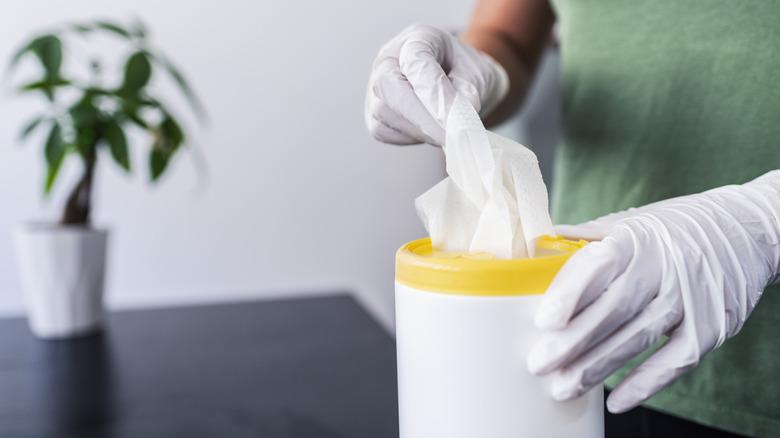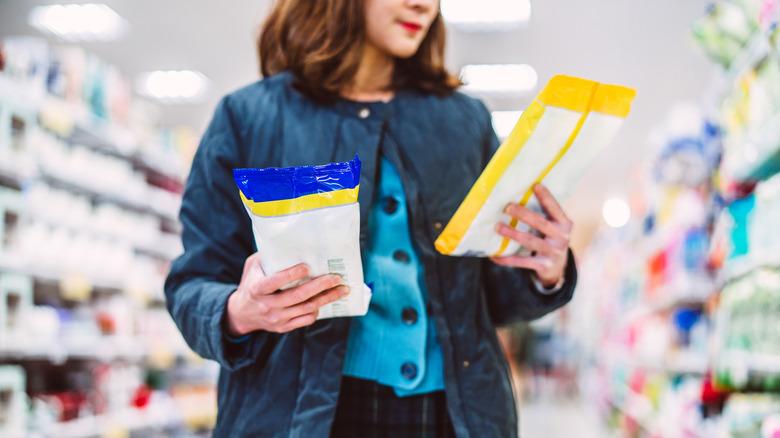Why You Should Think Twice Before Using Disinfecting Wipes To Clean Your Home
Disinfectant wipes are designed to kill bacteria and viruses. Use an appropriate wipe correctly, and you can protect the health of you and your family. Use the wrong wipe or use an appropriate one incorrectly and the opposite happens. That's why it's important to know what's in the disinfectant wipes that you might want to use to clean your home, especially if you have children in the home. For regular cleaning, you likely don't need a disinfectant wipe. Some disinfectants are safer than others, and you can make your own DIY disinfectant wipes using essential oils as cleaning solutions or other common household ingredients. That way, you're not lured into using chemicals that claim to improve your health only to find out that the exact opposite has happened.
We've learned a few things during the COVID era: Protecting yourself against contagious diseases is important, but it's also important not to overreact. In the early months of the COVID-19 pandemic, there was a boom in the sale and use of disinfectant wipes, but confusion about how they worked and the risks involved was also high. Calls to poison control centers about disinfectants and cleaning products grew by 20% in 2020.
What's also boomed is scientific knowledge of both the effectiveness and dangers of disinfectant wipes. We now know a lot more about when to use them. Currently, the United States Centers for Disease Control and Prevention (CDC) recommends cleaning with soap and water to remove most viruses and bacteria, and only using disinfectant wipes if someone in the house has been sick. It might be tempting to reach for the most potent chemicals to combat germs, but sometimes, as the saying goes, the cure is worse than the disease.
Disinfectant wipes and their chemical dangers
The disinfectants in wipes are EPA-registered agents that kill specific bacteria like Staphylococcus aureus or viruses like the one that causes COVID-19. If someone has been in your home has or recently had an infectious disease, you can use a disinfectant wipe which eliminates those germs, but use a safe one and use it correctly. Disinfectant wipes are meant for non-living surfaces, not the human body, so follow the directions on the package and wear gloves, goggles, or other protective equipment if directed. You should also be extra cautious using these wipes in a home with children, as they can leave toxic residue on surfaces. If your little one touches the kitchen table, then rubs his eyes, he could end up with severe eye irritation. So, instead, rest assured that soap and water are potent disinfectants. Together they break apart bacteria and viruses the same way they break down grease or grime.
A number of studies have found various illnesses among frequent users of commercial disinfectants. Rates of respiratory illnesses like asthma and lung irritation are higher in hospital cleaning staff and healthcare workers who use disinfectants than in those who don't. Ammonium chloride compounds (called "quats") are commonly used in disinfectant wipes. A number of studies have raised concerns about quats' harmful effects on human biology, including reproductive health, endocrine functions, and metabolism. Since 2020, increased levels of quats have been found in human blood and breast milk, especially in females who have used disinfectants.
Alternatives to toxic disinfectants
In cases when soap and water isn't enough, you can still find disinfectants that don't contain quats, bleach, or other potentially dangerous chemicals. Even household products can be misused, of course. Alcohol is an effective disinfectant, but even minor amounts of alcohol can cause severe skin irritation and other adverse effects, and can even poison children under the age of 12. The same could be said about hydrogen peroxide: it's a recommended disinfectant, but it's important to know how to use hydrogen peroxide (and not use it).
A DIY lemongrass spray cleaner combined with vinegar acts as both a cleaner and disinfectant. Lemongrass contains citric acid while vinegar contains acetic acid. A study in BMC Microbiology showed that a 10% solution of acetic acid with 1.5% citric acid has proven to be effective as a disinfectant against Staphylococcus aureus and Escherichia coli. Essential oils are another safe option. These are powerful, natural chemicals that — when used properly — can be used as cleaning solutions that kill potent germs.
Essential oils come in concentrated form and need to be diluted to be both safe and useful. Otherwise, they can be skin or eye irritants. But once the oil is diluted, it's easy to use it to disinfect surfaces. Simply mix 10 to 20 drops of an essential oil like lavender oil or cinnamon oil (depending on your taste) into a soap and water mixture, spray it on a sterile cloth, and use it to wipe clean your surfaces.


